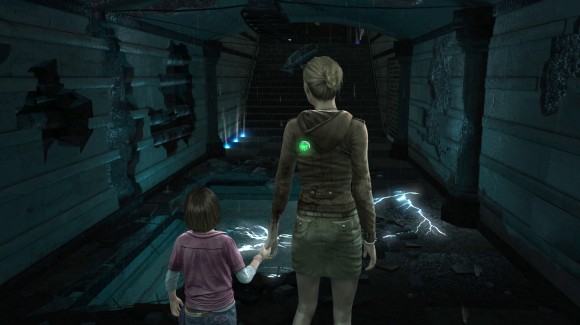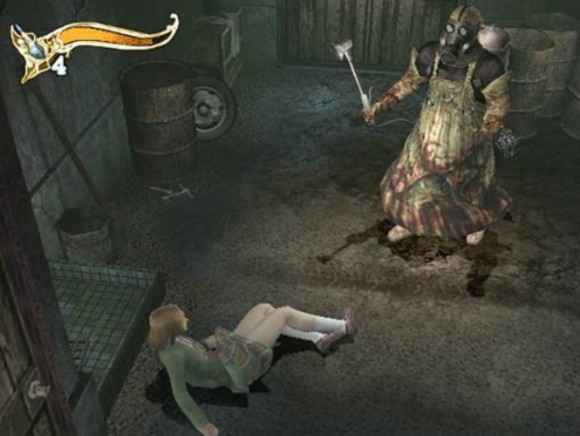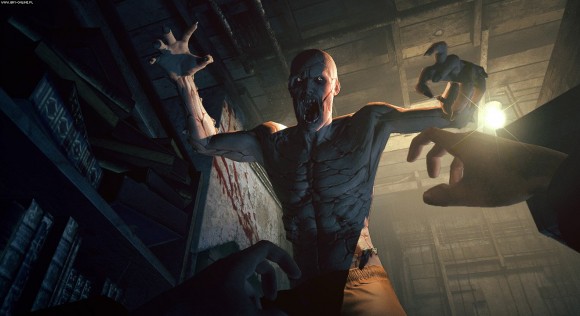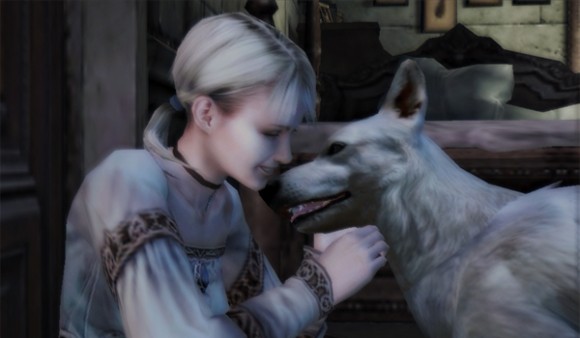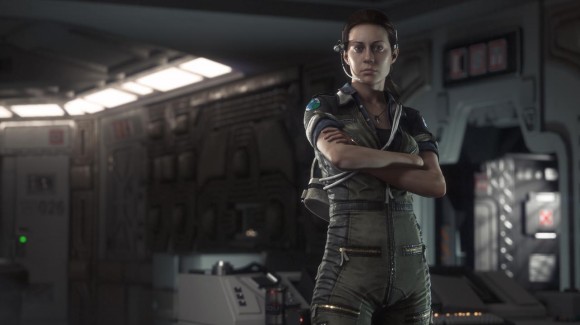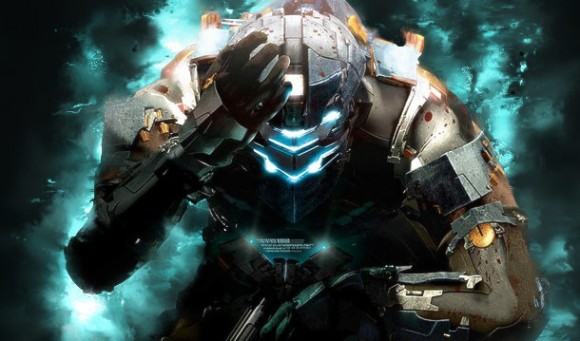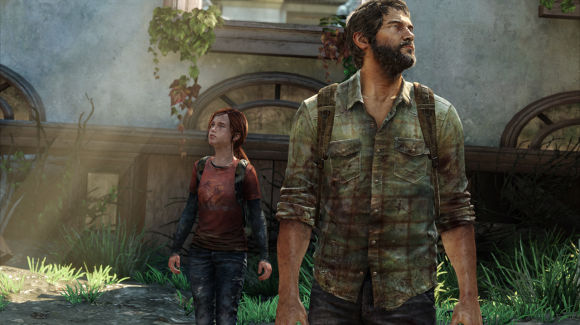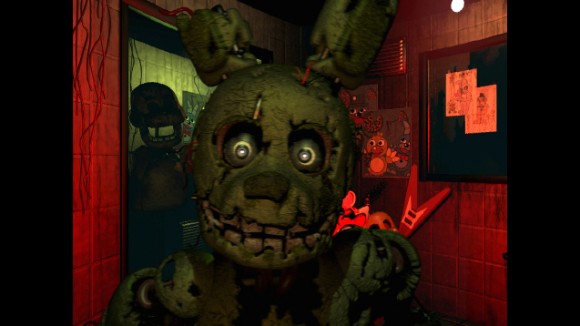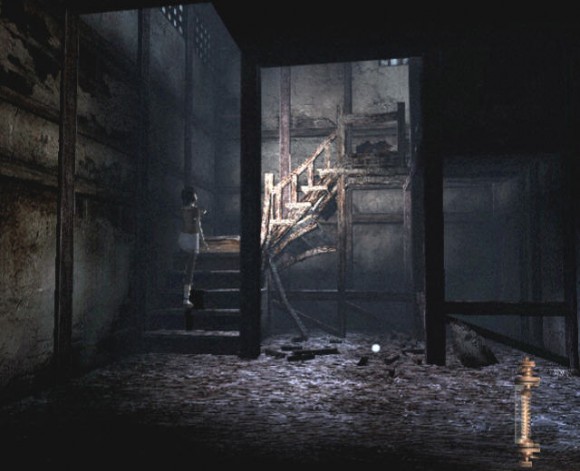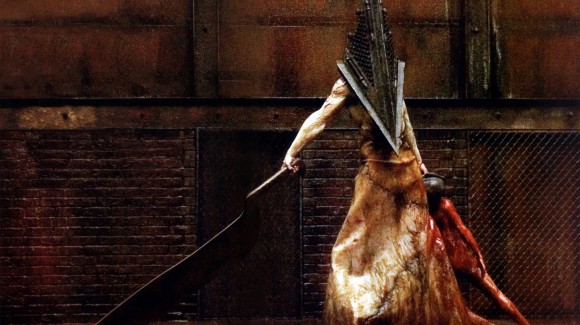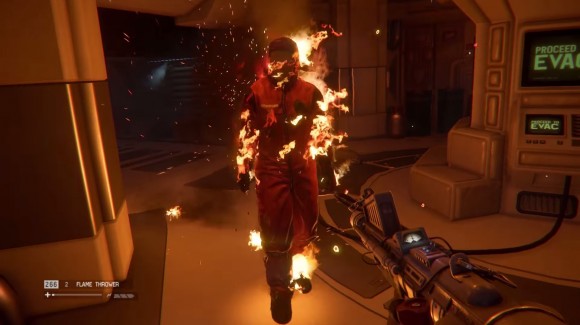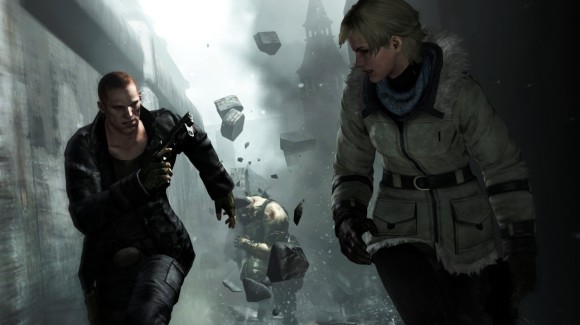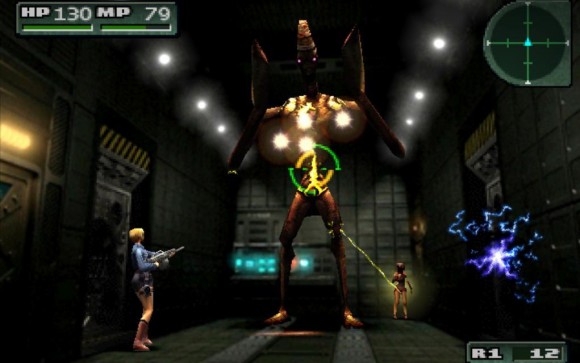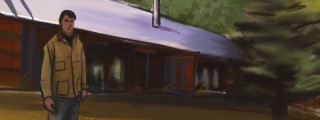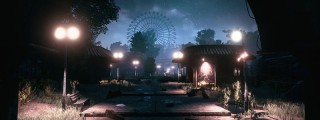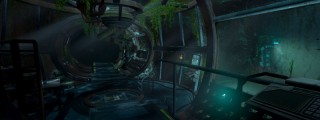Survival Horror. There’s arguably no other genre in the realm of video games that seems to hit such great highs and such crushing lows when it comes to content. JRPGs seem to have peaked with one “golden age” that can’t be replicated, platformers are the bread and butter of video games with no end thought possible, and first person shooters have had a slow, but steady rise to the top. So I guess the question on my mind is why Survival Horror seems to be the one genre that can be both so loved and so reviled, with each entry containing either emotionally gripping “scare you shitless” content, or working its way into territory of vast disappointment.
Not to be confused with the “survival game”, though there seems to be a little bit of crossover. For our purposes survival horror will be defined by its use of gore, ambiance, jump scares and resource management to elicit a visceral response from the gamer. This will exclude works such as The Forest which is Survivor with cannibals and lacking the sexy manly chin of Jeff Probst.
I’m going to take the risky venture and say we’ve actually entered another high period of survival horror. With true entries into the genre the likes of Evil Within, Resident Evil Revelations 2, Silent Hill PT, Alien: Isolation, indie titles such as the Five Nights at Freddys trilogy, SCP Containment, Darkwood, Lone Survivor, Slender, and Outlast. Even cursory entries into the genre, including Last of Us, Alan Wake, and Sunless Sea. All of these are just off the top of my head, and love, hate or even just ‘meh’ towards these titles, there’s no denying we’ve entered an era where they’re being given attention again.
So what makes a survival horror game, and what makes them so easy to massively fuck up? Here’s a quick glance.
The Feeling of Powerlessness
Until recently where we’ve started seeing a lot more plot or character driven games, video games are mostly unique in that they are in fact a power fantasy. No, not in the sense of a male nerd tripping out on getting all the bikini clad ladies. Power fantasy, as in it generally gives us the ability to not only be something we’re not, but to escalate our powers, abilities and skillsets in incredible ways. Nothing illustrates this more than a Metroid game, where Samus never starts out with more than the ability to transmogrify into a basketball and ends it by encasing enemies in ice and shattering them with ICBMs.
Need more examples? Think of Megaman, and his ability to gain the special powers of eight different bosses to trounce the endgame stages, or GTA where your psychopathic hero gets all the hottest cars and the biggest guns. The longer you play a video game, the stronger you get.
Survival Horror is the only place, for the most part, where this isn’t true.
In fact in some cases it’s the opposite. Where the longer you engage the title, the weaker you are. A perfect example is Konami’s 2004 Silent Hill: The Room. This game top loads you with healing items, ammo and a ton of magical charms to ward off them scary demon ghosts early on. Then later in the game it gives you pretty close to the mathematical equivalent of jack squat. Your success in the second half of this title is based on a mix of skill, and just how smart you were about not burning through your slight leg up early on.
Five Night’s at Freddys, a title where you have to monitor a series of freaky animatronics looking to mash up your innards, is designed so that each night that passes causes the animatronics to be both more active and more aggressive, rewarding your survival with increasingly inevitable death.
In order for a survival horror game to be effective in both ‘survival’ and ‘horror’, it seems it has to successfully make you feel powerless and exert an unforgiving sense of impending doom. This is likely why games such as Slender, Outlast and Five Nights are so effective, at least initially, they don’t give the player any power to begin with. You can try your best to prevent the enemy from reaching you in the first place, but should you let them close in you can count on a game over 95% of the time.
Games that fail in this simple execution tend to be more reviled by fans. Take for example Silent Hill 3 and Silent Hill Homecoming, both titles I personally enjoyed but arguably weren’t as appreciated by the greater fanbase. Both those games had a tendency to heavily deck the player character out with weapons and tools that just weren’t natural to the Silent Hill gameplay of run and survival. Automatic rifles? Machine guns? More ammo than I can count? It felt like Homecoming at least tried to offset this problem by making enemies stronger, but even I admit it lost some of its impact as I mowed down human enemies in the last quarter of the game.
Guns are Bad
I can hold my shit together in most survival horror titles until I get a gun. (In some cases flashlight, radio or camera.) This is due to the fact that a gun is generally the game’s way of letting you know shit is about to get real, and your time to walk around, taking in the atmosphere, sniffing the dead daisies is over.
This remains true as the game continues on and gives you bigger, stronger weapons. Sure there’s a brief grace period where the game may allow you to enjoy your new toy, giving you what seems like more ammo than you need, blowing away the zombie or spooky ass shadow ghost man fish thing that’s been stalking you for the past hour, but that also means an even stronger, smarter, fiercer enemy is waiting for you around the next bend. Or better yet, a boss fight you may or may not be prepared for.
This once more is counter to traditional game design. We want more guns, we want bigger guns, they give us the powerful to mowdown everything and laugh, LAUGH at our enemies like the pathetic little ants they are scrambling through the focused sun rays of our M24 bolt action sniper rifle.
Meanwhile a survival horror enemy will ask “What was that? A flea bite?”
Satisfying Protagonist
“Relate-able” or “Believable” protagonist don’t sit right with me. Ideally you want to be able to relate to most protagonists, see them with one character trait or ideal goal that we as an audience can associate with. Also let’s face it, if we want to push survival horror protagonists into the realm of “relate-able” how many of us have smothered our wives or raced off on a motorcycle into a zombie apocalypse? No. I use ‘satisfying protagonist’ in this regard as one that seems suitable for the situation, whose interactions with the enemies, environments and scenario aid in triggering our own responses of fear and desperation.
One of my go to games not only for its knack of making you feel powerless, but for a protagonist that you felt was in over her head and at the mercy of those after her, was Haunting Ground’s Fiona Belli, a young woman that found herself trapped in a medieval castle. She was, for lack of a better word, a sex object that all of the castles inhabitants wanted to boink for one reason or the other. Fiona as a person worked on a number of levels, she seemed like a relatively ordinary individual who enjoyed her parents company. Is a dog lover. Then wakes up to her situation in the same condition as the player, having no idea what the fuck is going on.
Fiona couldn’t really do much to defend herself, and it at least made sense in a lore context because all of the enemies were some bastardization of alchemy that made them impossible to kill. She was confused, she was scared, and she found a small bit of solace and hope in both her dog Hewie and her attempts to leave the castle. The more Fiona was hit, the more she suffered, and the more the player suffered. It was increasingly harder for her to recover from each blow served out by the alchemic monstrosities, giving incentive to not get hit in the first place. Much like the real world you may not instantly come back from a solid right hook to the skull.
Then if Fiona died? Well the screen fades to black, and what you hear isn’t pretty. It’s violently sexual, and leaves the player with the inferences of what happened in the wake of their failure. When you reload it’s a little more than just not wanting to lose your progress on the puzzles or recover all the items you found, your additional incentive is to get the character to safety.
Alien: Isolation gives you a bit more tools in the form of Amanda Ripley (who was Ellen Ripley’s daughter), but she’s in a similarly precarious scenario where her reactions and interactions with the environment make her believable. Sure the voice acting isn’t ace 100% of the time, but I could get on board with Ripley trying to force herself to swallow her fear as this giant, unknown blackish thing wandered corridors just inches away from her.
Two more of what not to do in such a case. Heather Mason once more, of Silent Hill 3, and Moira Burton of Resident Evil Revelations 2, handle their situations just a little too well. Sure, teenage girls are defiant, I get that, but it’s a little different when an otherworldly thing of meat and blood drops in front of you with every intent to split you down the middle with its tool of barbed wire and sawblades. It makes me disconnect from the situation they’re in. How can I believe it if they don’t seem to believe it?
Dead Space’s Isaac gives us a cat done right who ended up going very wrong. He’s a systems engineer, he’s got a wife, a blue collar job, and probably a dog. I think “fucked up” doesn’t even begin to describe his situation and he’s ill equipped for it. I’m not sure Dead Space 3 makes any illusions it wants to be survival horror, but the brave, macho space marine Isaac becomes goes against the grain of what the series has built. Yes there’s something to be said about adapting to your situation, I think Claire Redfield is a great example of a character who has adapted but is still mortal, so Isaac didn’t necessarily have to go from Rambo to Rambo III.
Then never deny the power of the unreliable narrator. In Eternal Darkness, all of the characters you were able to play as were at the mercy of forces beyond the realm of human comprehension, which would cause them to constantly hallucinate to the points that the effects could be detrimental to gameplay. Lone Survivor is the experiences of a dude you quickly learn not to trust, which leaves you to question how much of this game’s events are real and how much the protagonist is snapping.
Then of course you have Five Night’s at Freddys and Slender, which kind of skips the middle man and straight up makes you the protagonist. Yeah I know there’s often a ‘name’ attached to them, a minor background, but they’re an empty vessel for you to inhabit.
Which brings me to the final part.
Real Characters in Unreal Situations
First I want to take a moment to pause and give a lot of credit to Survival Horror for nailing the aesthetic idea of a “real person.” I come across this concept a lot in both film and video games, and what it means to ‘look’ real, to not fit a supermodel ideal presented by most supermodels and movie stars.
The problem is sometimes we go too far into the other direction. Into the realm of ‘straight up butt ugly.’ There’s a reason we have terms such as “the girl next door” or the “rugged mountain man.” People who have homegrown, unorthodox beauty that actually exist. There’s a decidedly ‘average’ look we tend to gloss over in our attempts to make things look too pretty or too ugly, though Survival Horror is the one genre I consistently can look to for a character that safely lands an ugly beauty or beautiful ugliness. Silent Hill’s original character designer even once stated he’d intentionally add imperfections to his characters, such as asymmetrical eyes or unhealthy skin blemishes. Which makes me worry a bit now that Silent Hill PT stars a literal television star.
Now back to the point at hand. You often can’t find an more average Joe than the ones in survival horror. College kids and high school students, journalists, writers (thanks Stephen King), or someone just trying to go on a goddamn vacation. There’s typically nothing special about them. They run out of breath, they miss their shots, they hallucinate, they bleed and stagger, they feel tragically human.
Their situations however are beyond inhuman. The brilliance here is that anything they go through is just real enough you can buy this event is happening in your background. Anytown USA or Anycity USA are the backdrop of most these titles. ObsCure 2 I felt like I was in a real college dorm, Lone Survivor is any of the crappy tenement buildings I’ve been to out in New York, Freddy Fazbear’s is a damn believable Chuck E. Cheese.
And yet the afflictions of these locales is anything but real. Sure it seems natural at first, but then you run into the trail of blood. Inky blackness cries from padded walls. Whispers from the shadows beyond the mists. Shit gets rusty, all doors are locked.
The greatest human fear is that of the unknown. So why not take the familiar and make it completely alien. Sure this looks like a normal elementary school, but then you crack open that door and the cracks on the floor spit Satan’s flames, you ask yourself what the fuck goes on in Ms. Fyke’s class during snack time.
A few early examples/precursors of the genre, Maniac Mansion and Splatterhouse, gave you lived-in homes any child of the 50s through 80s have probably been in and gave them strange, gory occurrences. Though not exactly survival horror, Last of Us’ stunning takes on real world locales was perhaps the best use of it. This is a dead world, a world turned on its ear. Shopping terminals full of triage gurneys and bloody bandages. Suburban households that haven’t been lived in for 20 years. Metropolises where nature has taken over and giraffes run free, while plants crush college campuses into dust.
That interplay of natural and unnatural. You want to be lulled into a sense of safety, but this game is taking everything you know to be safe and you know to love and turns it on its ear. Now add in architecture that’s flat out unreliable. Locations where the very rules of space and time change each time you move through a door or try to run down an abandoned highway. While not a video game, The Shining is the perfect example of spatial disorientation used to unsettle the viewer even further. You may not notice it right away, but in the back of your head you know that room is too big for that hotel, or that those doors can’t possibly lead anywhere. You know it’s not right.
Yes video games, Fatal Frame 2 took its notes in class. This title was great at disorienting the player with its off architecture, constant camera angle switches, and a reality that would place doors and houses where they shouldn’t be as the game saw fit. This was as disturbing and effective as its monster designs, jump scares and ambient sounds.
Resident Evil was another series effective in this category. Or, the early games at least. Resident Evil 2 really felt like a city that had lost all semblance of society and humanity. While trying to find refuge in an old school police precinct, you would come across several bizarrely laid out puzzles and passages. Meeting the precinct’s residents was also a creepy ordeal. Marvin “Last Cop on the Planet” Branagh, police chief Irons locked in his office with his taxidermy and the lovely laid out corpse of the mayor’s daughter, and Ben, the journalist so scared of the crawlies he decided to lock himself in the safety of a jail cell. All these little touches added to the mystery, atmosphere and complexity of the game.
I’ve seen this swing too far in both directions. Games that would either give too little or too much in terms of their world building and atmospheric elements. Evil Within abused space to the point it was just nonsensical, where I could never settle into the ride and just had to hang on to where ever the game took me next. Silent Hill Downpour perhaps wasn’t freaky enough, it felt too open open world, “Don’t mind me, I’m just a local inmate going on a jog through town.” There’s a balance to strike.
Now of course this isn’t to knock games where you never once set foot into anything close to a normal environment. Your castles and your Spencer mansions and your space stations and your aquatic habitats. Those can be cool in their own right, but I get a little extra thrill when I pop into my local fast food joint or bar in game, can turn on the jukebox, and tell myself “Well back to the nightmare.”
Where the Monsters At?
Pyramid Head and Slender are two of the most iconic modern characters in horror, up there with Freddy, Jason, Chucky, Dracula and the Wolfman and I will defend that to my grave.
Slenderman is bizarre creation of a pop culture collective. It’s a mythos that was generated on the internet, and expanded upon by a number of websites, artists, filmmakers and game developers. I’ll be frank, he also initially scared the bejeezus out of me. Yes I knew it was fake, an urban myth created as a result of a photoshop from minute one, but there was something very, very unsettling about the creature.
Pyramid Head, introduced to us by Silent Hill 2, flat out seems to be the model most 3D artists jump to these days when they design their own monsters. It’s hard not to find a survival horror game that has “Big beefy man with metal shit on head trying to stabulate you” these days. Yet none of them feels right, and each of them feels just like another rip off of Pyramid Head. Why can’t it be recreated? Why can’t anyone nail another disturbing creature on the level of ol’ Butcher’s knife?
I believe the more effective monsters of survival horror works on the earlier ideas I outlined with both a sense of the familiar and a sense of helplessness. The problem with Pyramid Head is that he’s unstoppable, with Slenderman we don’t know what it wants, that it just likes fucking with people and killing them out the blue. We are puny as gazelle before lions in their presence.
Yet, don’t they strangely look like us? Slenderman has that dapper suit. It’s just. He’s too long. His goddamn face is missing. He has claws instead of fingers. Pyramid Head could have been ol’ Tony from the butcher’s shop if it weren’t for that oversized fetish box over his head. The problem with recreating Pyramid Head (or Jason or Leatherface) is that we’ve already seen it, we already know that monster well, so copycats feel like just that, copycats and not a new monster to intimidate us and drive fear into us.
It’s the same reason we’re a bit collectively drained on zombies and vampires, and why the 90s drove slashers into the ground. The more we’re exposed to it the more we just take it as an every day occurrence. Zombies, believe it or not, used to be scary. I have a theory on why that is, they were like us and they represented our inevitable death, they were also slaves to their base instincts. No human wants to admit they’re less than human, that their drive is reptilian and every complex action we take is a result of basic desire. Yet Zombies used to remind us of that.
Used to.
It’s why I have a deep set problem with survival horror games that don’t push the envelope on monster design. Silent Hill Downpour was flat out boring because every single monster was some variation of human. Not even Resident Evil, which is pure adrenaline now, does that with their monster designs. Resident Evil Revelations once more takes something familiar, tons of different fish species, and turns the beauty of nature into horrifying beasties you never want to run into.
It’s insanely difficult to nail good monster design and invent a truly classic monster, this is true, though I think it’s entirely possible to push the limits of the familiar into the realm of the spooky. Movies like the original Pulse at least put forth the idea our every day technology, cellphones and computers, could be the enemy. Early Silent Hill each enemy was heavily thematic, a reflection off the psychotic breakdown of the protagonist or the antagonist. While not every Silent Hill enemy was human, it took inspiration from the worst or most taboo aspects of humanity. Enemies that represented sexuality and rape, enemies that represented sickness, enemies that seemed to be badly burned in a fire, enemies who represented a person’s death via asphyxiation, electrocution or being crushed. They reminded us of pain, lust, plague and fear.
Even the Xenomorph, the star of Alien: Isolation, a creature whose origin we don’t know, is still driven by key animal desires. Survival, propagation, wanting to be the only apex predator. Similarly the Synthetics in Alien: Isolation were another take on a human that looked off. They hit the uncanny valley, looking like us but not quite. They also couldn’t be killed, so when a Synthetic told me “You were becoming hysterical” as it stood there emotionless and bashed me in the skull with an elbow drop, yes I could admit I was becoming fucking hysterical
Whats in a Name?
Each of us looks for something different when we play video games, and that’s perhaps the key reason as to why there can’t be any wholly objective opinion to how they should be made or how they should be played. Resident Evil as a franchise is a great example, because they keep inventing and reinventing to keep themselves relevant in the game market.
This has caused the genres Resident Evil explores to transition many times. It started as de facto Survival Horror, drifted into action adventure, and is even arguably a bit arcade shooter. So when you call yourself a “Resident Evil fan” this can frankly mean anything. Maybe you want that short shooter/survival horror hybrid of 4, Zero, and the original Remake, maybe you want the more action oriented 5 or 6, or maybe you want the stressful run for your life and tank controls (for some reason) of the early series.
The Revelations franchise seems to be an attempt to consolidate the best of Resident Evil’s two faces. The Action Adventure and the Survival Horror. They’re not necessarily genres, or a fanbase, that meshes, but good lord the developers are trying (the publisher is another thing…) Silent Hill has also suffered a similar identity crisis, though they’ve always tried to remain firmly in the realm of survival horror they’ve introduced mechanics that don’t exactly mesh. The third person shooter aspects of Homecoming, the RPG aspects of Origin and the open world aspects of Downpour have arguably worked against them.
At the same time survival horror doesn’t seem to be beholden to a ton of genre rules. Even this breakdown is illustrating what I love best. Developers of all levels have proven time and time again that there is no one gameplay model that serves horror best. At times one gameplay model can even work against the game, the tank controls of late 90s/early 2000s titles added to the tension at first, but then they just became annoying. The isolation and inability to do nothing in the recent Slender games were great until it spawned a gajillion copycats. Even with the current darling Five Nights at Freddy’s, the more skeptical among us ask how many more titles can the mechanics of sealing areas and monitoring cameras keep us on edge for.
The mechanics by their very nature can also play headgames with us. We have the obvious, such as Eternal Darkness’ use of a sanity meter that messes with the game’s controls and visuals the lower it drops. Fatal Frame gives you a camera that can solve mysteries and kill ghosts, only ghosts can use it to kill you, and the more you use the camera to defend yourself the more likely it is that same action will get you got. Five Nights is designed as such that your own actions as the player are what psyches you out. You monitor the possessed animatronics and shut doors to make sure they don’t mutilate you which drains your battery power which means you can’t monitor the animatronics or shut the doors to make sure they don’t mutilate you. In Slender, the simple act of trying to achieve the game’s one and only goal is what will end your life.
At this point in time there seems to be no perfect gameplay mix for survival horror. Hell, Squaresoft’s Parasite Eve can be called survival horror and it’s an RPG. One can argue working out new mechanics fits into those very same themes of characters dropping into a new, intense situation of isolation and fear, into the idea of unknown environments one must traverse for survival. Part of the impact of Five Nights is not knowing what you’re dealing with when you first open the game and slowly working out the gameplay model just for the sake of dying less.
I’m a macabre guy. Horror is my jams. Movies, comic books and natch, vidya games. I consume them endlessly, they’re like vitamins to me, and even if a title looks not so good I’ll at least wait for a price drop or two (or five in cases like Silent Hill Downpour and Resident Evil 6). It’s a genre I really enjoy experiencing, even if overall quality doesn’t always land, and with that I think I’m going to go and get my scare on.

